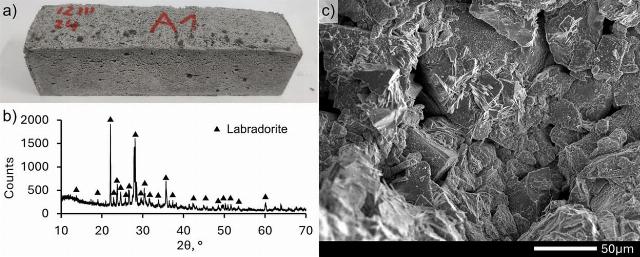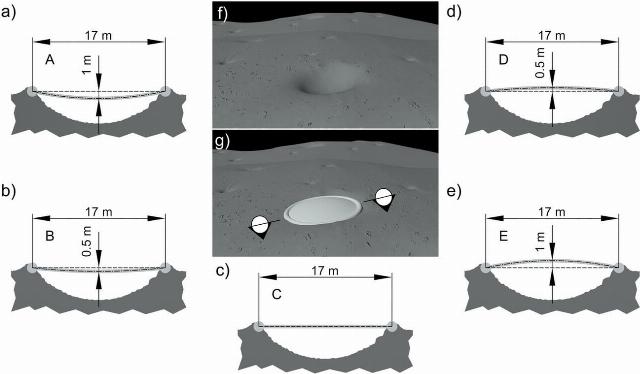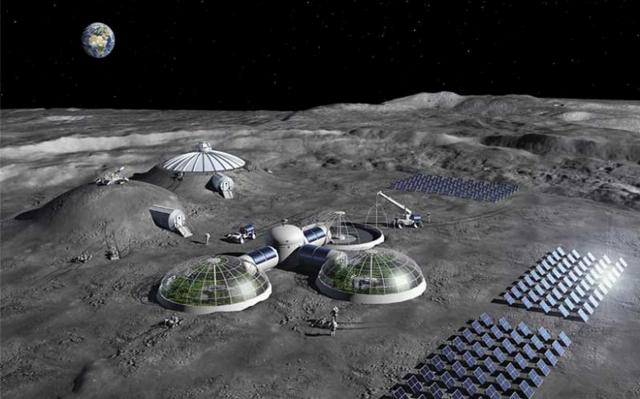According to space engineers, it is not necessary to deliver various modules from Earth to establish a permanent base on the Moon. Instead, they propose, in theory, a relatively simple way to simultaneously protect yourself from radiation and create an enclosed space where you can even breathe without a spacesuit — to settle into a lunar crater and cover it with a "roof" that can be built directly on the Moon from regolith.
They plan to make the south pole of the Moon a new Antarctica in the coming decades: the space powers intend to build permanent bases there. According to the American Artemis program, it is planned to spend six days on the Moon in 2027, and then deploy the modules and equip everything necessary for life and work on the surface of the Earth's natural satellite for several weeks or even months.
China has similar plans, but space engineers there are considering a slightly different option — to settle not on the surface, but to "inhabit" the lunar lava tube, one of the tunnels that billions of years ago were drilled into the bowels of the Moon by red-hot magma. These caves are attractive because they represent a "ready-made" shelter from radiation, and this is a serious issue for long-term lunar missions. But lava tubes have a serious drawback — the risk of the "ceiling" collapsing.
Recently, scientists from Poland and the United Kingdom proposed a curious alternative to all the selected options — to choose a crater suitable in size, depth and location and simply cover it with a "roof". In an article for the journal Nature, the researchers said that it will be possible to build this "roof" directly from the lunar regolith.
However, to prepare a building mixture from it, an alkaline activator must be delivered from the Ground, and a solution must be made from it, that is, water is required. In theory, it is not necessary to deliver it from Earth — it is in the lunar permafrost in the form of ice at the bottom of craters, but it must be extracted and melted under sufficient pressure.
However, according to the authors of the idea, all this is quite feasible and it will be possible to obtain a durable building material on the Moon — the so-called geopolymer. Scientists experimentally created it based on a "copy" of the lunar soil, a substance called LHS—1 (Lunar Highlands Simulator - "simulator of the soil of the lunar highlands"). It is produced in the USA based on data on the composition of samples delivered by the Apollons.

A sample of a geopolymer made experimentally from an analog of lunar soil
Image source: Magdalena Mrozek et al, 2025
Such a geopolymer on the Moon is then supposed to be poured into molds and provide the substance with curing. This requires a temperature of +60 degrees Celsius and a vacuum, which is also considered achievable on a long lunar day.
Then the resulting components, about 50 centimeters thick, will have to be combined into a single structure. The engineers considered different options: a convex "dome" with a rise of half a meter or a meter, a "lid" with the same degrees of concavity and a completely flat plate.
As a result, tests for resistance to compression and stretching have shown that a concave "roof" will be the most reliable. It is supposed to recreate the earth's breathable air under it, and with it the corresponding pressure. The air will press on the roof from the inside, and in its concave state this is as "beneficial" as possible: the pressure will press the edges of the roof against the rim of the crater, thereby increasing the tightness.

Comparison of "lid" design options for a lunar crater
Image source: Magdalena Mrozek et al, 2025
The authors of the concept calculated everything necessary to build such a "roof" over a hypothetical crater with a diameter of 17 meters and a depth of six meters in the Sea of Tranquility near the equator, in the area of the Apollo 11 landing site. Scientists reasoned that this region is well studied, where the Sun warms the surface as much as possible. As mentioned above, today permanent bases are going to be set up at the lunar South Pole, where the sun's rays fall at a small angle.
Adele Romanova
Graduated from the Faculty of Journalism of Lomonosov Moscow State University. She started in 2002 as a correspondent and editor of news broadcasting on various TV channels, and later became an author of science and technology news in online publications.


